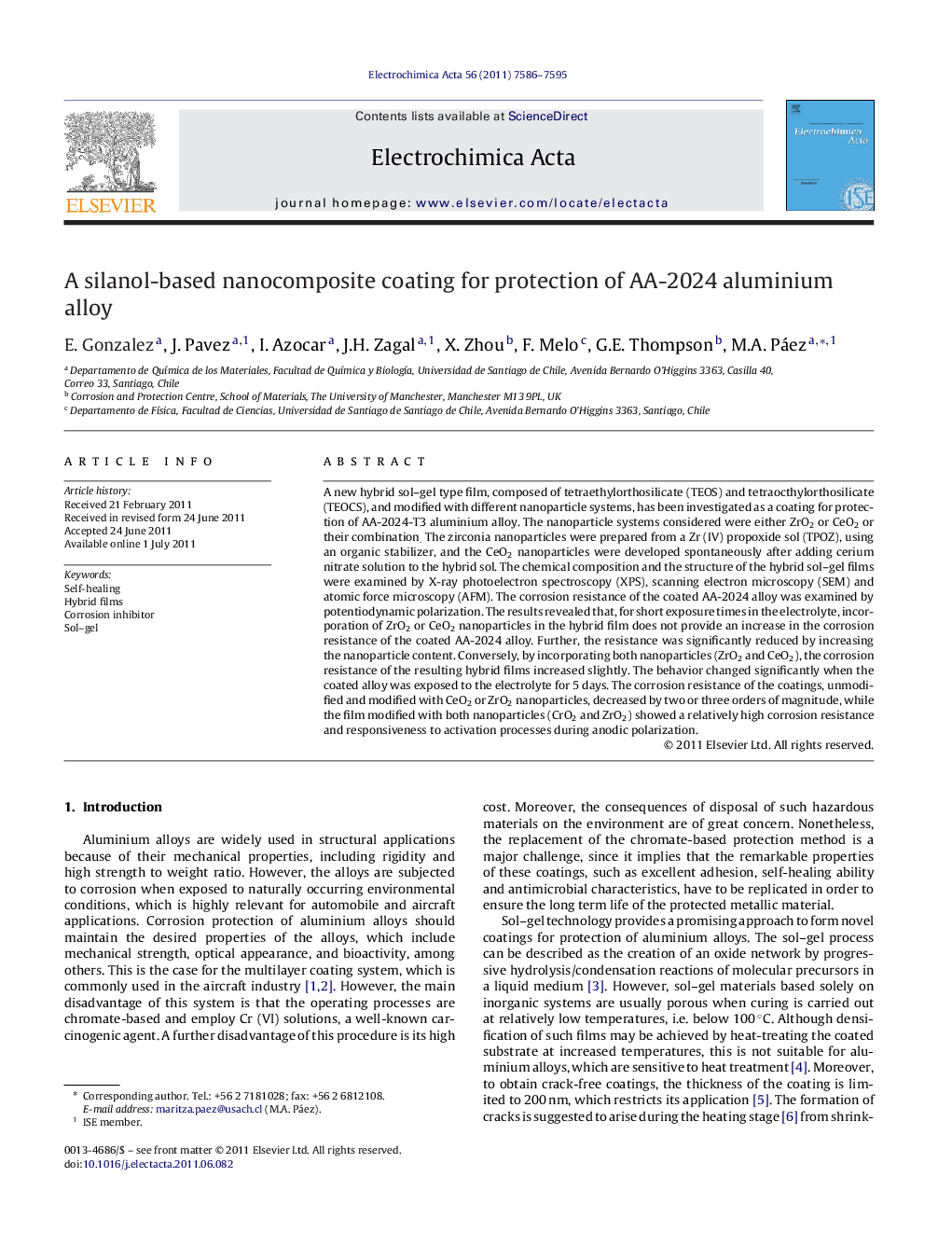| Article ID | Journal | Published Year | Pages | File Type |
|---|---|---|---|---|
| 190816 | Electrochimica Acta | 2011 | 10 Pages |
A new hybrid sol–gel type film, composed of tetraethylorthosilicate (TEOS) and tetraocthylorthosilicate (TEOCS), and modified with different nanoparticle systems, has been investigated as a coating for protection of AA-2024-T3 aluminium alloy. The nanoparticle systems considered were either ZrO2 or CeO2 or their combination. The zirconia nanoparticles were prepared from a Zr (IV) propoxide sol (TPOZ), using an organic stabilizer, and the CeO2 nanoparticles were developed spontaneously after adding cerium nitrate solution to the hybrid sol. The chemical composition and the structure of the hybrid sol–gel films were examined by X-ray photoelectron spectroscopy (XPS), scanning electron microscopy (SEM) and atomic force microscopy (AFM). The corrosion resistance of the coated AA-2024 alloy was examined by potentiodynamic polarization. The results revealed that, for short exposure times in the electrolyte, incorporation of ZrO2 or CeO2 nanoparticles in the hybrid film does not provide an increase in the corrosion resistance of the coated AA-2024 alloy. Further, the resistance was significantly reduced by increasing the nanoparticle content. Conversely, by incorporating both nanoparticles (ZrO2 and CeO2), the corrosion resistance of the resulting hybrid films increased slightly. The behavior changed significantly when the coated alloy was exposed to the electrolyte for 5 days. The corrosion resistance of the coatings, unmodified and modified with CeO2 or ZrO2 nanoparticles, decreased by two or three orders of magnitude, while the film modified with both nanoparticles (CrO2 and ZrO2) showed a relatively high corrosion resistance and responsiveness to activation processes during anodic polarization.
• A new silanol-based hybrid coating has been synthesized. • The incorporation of CeO2 and ZrO2 nanoparticles into the coating greatly improves the corrosion resistance of the coated aluminium alloy. • The effectiveness of the coating is increasingly evident for long term exposure to the sodium chloride solution. • The silanol-based nanocomposite coatings have self-healing ability.
